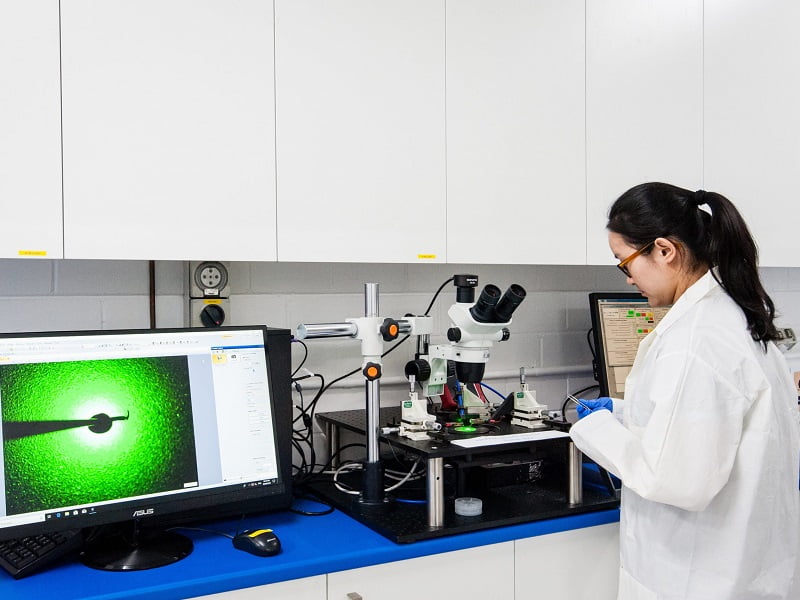Laser diode manufacturer BluGlass has been named as the only Australian member of a new regional innovation hub set up by the US Department of Defense to produce wide bandgap semiconductors.
The ASX-listed company will take part in the Commercial Leap Ahead for Wide Bandgap Semiconductors (CLAWS) Hub, one of eight Microelectric Commons regional innovation hubs that will be established.
Wide bandgap semiconductors offer higher voltage and temperature capacity than conventional chips, and are increasingly sought after for next-generation sensing, artificial intelligence, and quantum applications.

The CLAWS Hub consists of seven members and is led by the North Carolina State University (NCSU). Other members include Adroit Materials, Coherent, General Electric, Kyma and Wolfspeed — all US-based companies.
It has been awarded US$39.4 million of the US$238 million made available to the hubs through the CHIPS and Science Act this year.
At the time of the announcement, deputy secretary of Defense Kathleen Hicks said the hubs are focused on “on bridging and accelerating the lab-to-fab transition, that infamous valley of death between R&D and production”.
A total of $2 billion will be made available to all eight Microelectric Commons regional innovation hubs by 2027. The CHIPS and Science Act includes a US $39 billion in incentives for the domestic semiconductor industry.
BluGlass chief executive Jim Haden said the company was thrilled to have been named a member of the CLAWS Hub, which will “develop next-generation photonic devices that will have significant commercial and strategic defence applications”.
“The work we will be contributing to the hub perfectly aligns with BluGlass’ wide-bandgap and extended-wavelength roadmaps and will leverage the benefits of our proprietary [remote plasma chemical vapour deposition] technology,” he said.
BluGlass has developed an end-to-end laser diode design, fabrication and packaging capability that uses gallium nitride (GaN). It is a finalist in the 2023 InnovationAus Awards for Excellence for the technology.
MC Dean Distinguished Professor of Electrical and Computer Engineering at NCSU and director the CLAWS Hub, Fred Kish, said the partnership with BluGlass and other members would further add “a path to commercialisation”.
“We are delighted to be partnering with BluGlass in the NCSU-led CLAWS Hub working together to innovate next-generation III-N photonic and optoelectronic solutions with BluGlass further adding a path to commercialisation,” he said.
“The photonic technologies in the hub hold the potential to enable quantum technologies, communications, AI applications, position/navigation/timing, biotechnical and medical, materials processing, displays, and a host of additional defense needs.
“They are also important for national security applications by providing energy efficiency, size, weight, power, and performance advantages in critical application areas including weapons systems, war fighter outfitting, and a host of additional defense needs.”
According to BluGlass, the contractual terms and funding agreement between NCSU and the hub members remains under negotiations but will be disclosed “if and when they become available”.
Of the eight hubs to be established, CLAWS has the largest amount of available funding for the least number of members. The next largest hub is the $26.9 million California Defense Ready Electronics and Microdevices Superhub with 16 members.
The Northeast Regional Defense Technology Hub – which has been awarded $40 million, the most funding of any hub – has 51 members, while the largest hub consisting of 130 members has $32.9 million available.
Do you know more? Contact James Riley via Email.

